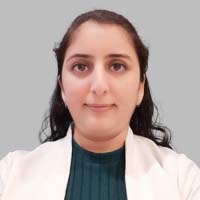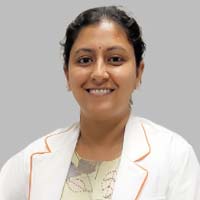All Content Copyright 2024. All Rights Reserved
Connect with Pristyn Care
Book free appointments with minimum wait-time & verified doctor details
If you are suffering from vision loss or have any other signs of cataracts, contact the best cataract surgeon in India. Get advanced and minimally invasive treatment for cataracts under the care of the best eye doctors.

Ophthalmologist - 13 Yrs. Exp.
MBBS, DO, DNB - Ophthalmology
Hospital(s): ![]() Pristyn Care
Pristyn Care
Dr. Prerana Tripathi is a Ophthalmologist/ Eye Surgeon in Malleswaram, Bangalore and has an experience of 13 years as a medical practitioner. Dr. Prerana Tripathi practices at Pristyn Care in Malleswaram, Bangalore. She completed MBBS from Rajiv Gandhi University of Health Sciences in 2009, DO from Madurai Medical College in 2015 and DNB - Ophthalmology from National Board of Education, New Delhi in 2017. Some of the services provided by the doctor are: Nystagmus, Laser Procedures for Retina, Eye Infection, Stringy Eye Discharge and Entropion etc.

Ophthalmologist - 10 Yrs. Exp.
MBBS, DNB
Hospital(s): ![]() Pristyn Care
Pristyn Care
Dr. Akanksha Batra is a Ophthalmologist / Eye Surgeon in Dattawadi, Pune and has an experience of 10 years as a medical practitioner. Dr. Akanksha Batra practices at Pristyn Care Clinic in Dattawadi, Pune.

Ophthalmologist - 10 Yrs. Exp.
MBBS, MS-Ophthalmology
Hospital(s): ![]() Pristyn Care
Pristyn Care
Dr. Nilesh Bhausaheb Chakne is renowned Ophthalmologist in Pune. He practices at Pristyn Care Clinic, Pune.

Ophthalmologist - 9 Yrs. Exp.
MS, DNB, FICO, MRCS, Fellow Paediatric Opth and StrabismusMobile
Hospital(s): ![]() Pristyn Care
Pristyn Care
Dr. Chanchal Gadodiya is an expert and experienced Ophthalmologist and Eye Surgeon with an experience of 9 years, and specialises in Ophthalmology. She graduated and obtained her MBBS degree from B J Medical College, Pune. (Maharashtra Universities of health and Sciences) in 2013, and then her postgraduate MS degree from B J Medical College, Pune. (Maharashtra Universities of health and Sciences) in 2016.Currently, she is practicing at Pristyn Care Clinic in Pune. She is fluent in English and Hindi and provides compassionate care for all her patients to ensure complete recovery. She has been commended by her patients for her caring nature, hard working attitude, and willingness to be there for them - any time of day and night.She provides treatment for the following - Ophthalmology, Indian Monofocal Cataract, Indian Multifocal Cataract, Foreign Monofocal Cataract, Foreign Multifocal Cataract, Squint, Trifocal Indian Cataract, Trifocal Foreign Cataract, Monofocal Indian Toric Cataract, Monofocal Foreign Toric Cataract, Multifocal Indian Toric Cataract, Multifocal Foreign Toric Cataract, Trifocal Indian Toric Cataract, Trifocal Foreign Toric Cataract, C3R, Pterygium, and other conditions. She is registered in the Indian Medical Registry with the license number 2013051627. She strives to provide advanced medical care in a comfortable and holistic environment for all patients coming to her for treatment.
In India, cataracts are a very common disease and the primary cause of blindness. Cataracts usually develop in elderly people and lead to blurry vision, light sensitivity, night vision problems, and other symptoms that can significantly affect the individual’s life. The only treatment method for all types of cataracts is surgery. Cataract surgery is a safe and effective option to restore and preserve vision.
A cataract is the clouding of the eye lens, which makes it difficult for light to pass through and reach the retina. The eye lens is a clear, flexible structure that is made up of proteins. With age or due to some other reasons, the proteins in the lens may break down and form cloudy patches that interfere with vision.
Clouded vision can make it difficult to read, drive, or even perform other basic tasks. In general, people suffering from cataracts have a vision as though they are looking through a frosty or fogged-up window. The condition generally develops slowly and doesn’t impact vision in the early stage. However, with progression, it can eventually impair vision to a great extent. Therefore, it’s crucial to seek proper treatment for cataracts to prevent vision loss.
Typically, a cataract can develop at any age, but it’s more common in older people. Here are some common types of cataracts-
There are other less common types of cataracts as well that include:
In the initial stages, cataracts usually don’t present with symptoms. But as the condition progresses, the following symptoms may arise-
These symptoms can worsen over time, and in advanced cases, they can lead to significant vision loss or even blindness. If you are experiencing any of these above-mentioned symptoms, you are likely to need cataract surgery to address these problems. To undergo cataract eye surgery in India, consult the best eye doctor near you.
Various factors contribute to the development of cataracts. Some of the leading causes are explained below-
It is important to note that while some risk factors for cataracts, such as age and genetics, cannot be controlled, other risk factors, such as UV exposure and lifestyle factors, can be modified to reduce the risk of developing cataracts. Protecting your eyes from UV radiation by wearing sunglasses and a hat, and avoiding smoking and excessive alcohol consumption, can help reduce the risk of cataracts.
An ophthalmologist or optometrist are healthcare professionals who should be consulted for the diagnosis and treatment of cataracts.
An ophthalmologist is a medical doctor who specializes in the diagnosis and treatment of eye diseases and can perform surgery if necessary. They can provide a comprehensive evaluation of your eye health, including a detailed examination of your lens to determine if you have cataracts. They can also provide treatment options, including surgery if necessary, and manage any other eye conditions that may be present.
An optometrist is a healthcare professional who specializes in vision care and can diagnose and manage cataracts, as well as other eye conditions. They can perform a comprehensive eye examination to determine the extent of your cataracts and provide treatment options, such as corrective lenses, if appropriate. In some cases, they may refer you to an ophthalmologist for surgery if necessary.
It is important to have regular eye examinations, especially as you age or if you have a family history of eye diseases, to help detect and manage any eye conditions, including cataracts, as early as possible. You can get in touch with the best cataract surgeon in India by giving us a call.
To diagnose the severity of the cataract and identify the safest approach to treatment, the doctor will recommend a comprehensive eye examination that will include the following-
If cataracts are detected during the examination, your eye doctor may also perform additional tests, such as a biometry test to measure the size and shape of your eye, to help determine the best type of intraocular lens (IOL) for cataract surgery.
The treatment for cataracts typically involves surgery to remove the cloudy lens and replace it with an artificial lens, also known as an intraocular lens (IOL). Most people worry about the safety and effectiveness of the procedure. But it should be noted that cataract surgery is one of the most commonly performed eye surgeries in India, with a high success rate in restoring vision and improving the quality of life.
The surgery is typically performed on an outpatient basis, and most people can go home the same day. However, in some cases, the condition may not be severe enough to require surgery. In such cases, the cataract doctor will recommend watchful waiting, which involves looking out for the signs of cataract progression. Once the cataract has matured enough to be safely removed without damaging other eye components, the doctor will recommend surgery.
If you need to get a cataract operation in India, you can get in touch with us.
Cataract surgery is a safe procedure and typically takes less than an hour to perform. Here's a step-by-step overview of how cataract surgery is typically performed:
After the surgery, you will be monitored in a recovery area for a short time before you are allowed to go home. You may need to wear a protective shield over your eye for a few days to prevent accidental injury or rubbing of the eye. Your eye doctor will provide you with specific instructions on how to care for your eye after surgery, as well as any medications or eye drops you may need to take.
There are several different techniques of cataract surgery that can be used, depending on the specific needs of the patient and the preference of the surgeon. Here are some of the most common techniques:
Besides the above-mentioned techniques, there are other techniques available, too, such as extracapsular surgery, intracapsular surgery, etc., that may be used as required. Each technique has its own advantages and disadvantages, and the best approach for each patient will depend on several factors, including the severity of the cataract, the patient's overall health, and the surgeon's experience and preference.
Currently, laser cataract surgery in India is the most popular technique as it is safer and more effective compared to other techniques.
Here are some of the expected results of cataract surgery:
While most people have a positive outcome from cataract surgery, there are some risks and potential complications too. Therefore, it’s crucial that you consult the best cataract surgeon in India to ensure they explain the risks and benefits of cataract surgery to help you make an informed decision.
Although cataract surgery is considered a safe and effective procedure, there are some risks, complications, and side effects that can occur during or after the surgery. Here are some of the potential risks:
Besides these, you may experience other side effects, such as glares, halos, dry eyes, etc. But these side effects are temporary and often go away on their own or can be managed by medications.
After cataract treatment, it is important to follow the post-operative instructions given by your eye doctor to ensure a smooth and successful recovery. Here is a general recovery timeline after cataract surgery-
It can take several weeks or even months for your vision to stabilize after cataract surgery fully. You should continue to attend regular eye exams and report any changes in vision or discomfort to your eye doctor.
Here are some tips to help with recovery:
Following the post-op guidelines is essential to ensure that your eyes heal properly.